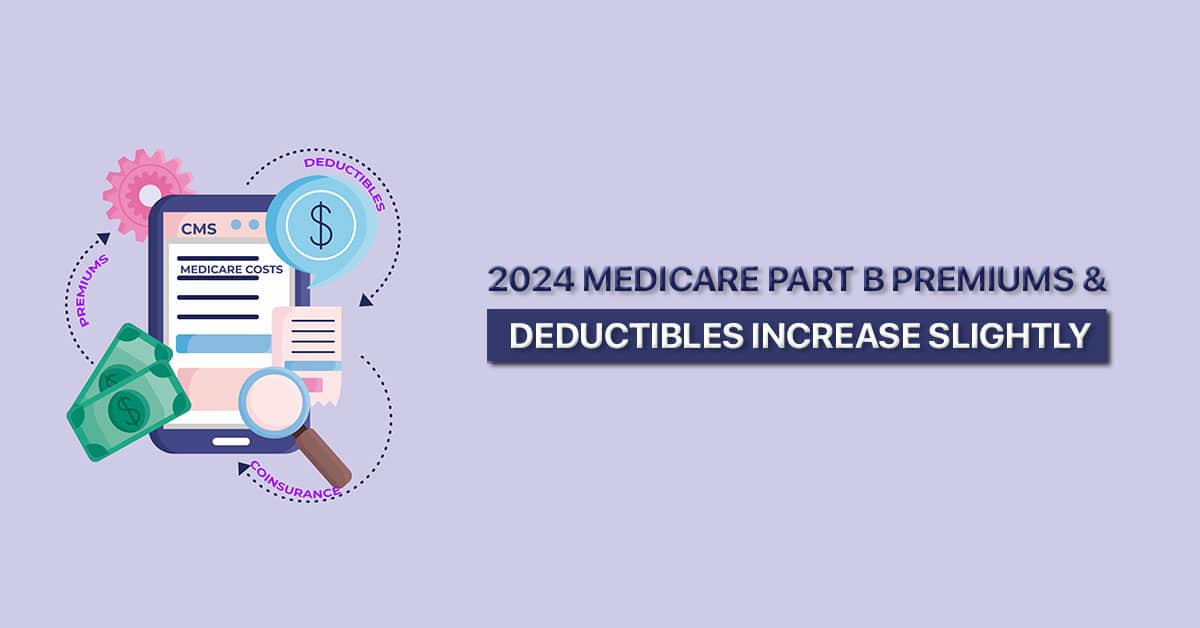2024 medicare part b premium: The Centers for Medicare and Medicaid Services have unveiled the premium rates, deductibles, and coinsurance figures for Medicare Part A and Part B in 2024, along with the income-based monthly adjustments for Medicare Part D in the same year.
What is the Impact of 2024 Part B Premiums and Deductibles On Medicare Costs?
Medicare Part B encompasses a range of essential services including physician visits, outpatient hospital care, specific home health services, durable medical equipment, and various other medical treatments not covered under Medicare Part A. In 2024, the standard monthly premium for Medicare Part B enrollees will be $174.70, reflecting a $9.80 increase from the 2023 rate of $164.90. Additionally, the annual deductible for all Medicare Part B beneficiaries will rise to $240 in 2024, up by $14 from the previous year’s deductible of $226.
The rise in the 2024 part b premium and deductible is primarily attributed to projected increases in healthcare expenditures, compounded by adjustments related to the 340B-acquired drug payment policy from 2018 to 2022 under the Hospital Outpatient Prospective Payment System, as stated by CMS. Following a court ruling in July during the Medicare appealing case, CMS is planning to issue supplementary payments to affected providers for 340B-acquired drugs in the form of a one-time lump sum payment.
Commencing in 2023, individuals whose full Medicare coverage concludes 36 months after a kidney transplant, and who lack specific alternative insurance coverage, have the option to continue Part B coverage for immunosuppressive drugs by paying a premium. For 2024, the standard premium for immunosuppressive drugs is set at $103.
Since 2007, a beneficiary’s Part B monthly premium has been contingent on their income. These income-related monthly adjustments affect approximately 8% of individuals enrolled in Medicare Part B. Detailed information regarding the 2024 Part B total premiums for high-income beneficiaries with full Part B coverage can be found on the CMS website.
Costs and Deductibles for Medicare Part A
Medicare Part A provides coverage for inpatient hospital care, skilled nursing facilities, hospice, inpatient rehabilitation, and some home healthcare services. Nearly 99% of Medicare beneficiaries are exempt from a Part A premium due to having accumulated the requisite minimum of 40 quarters of Medicare-covered employment.
In 2024, beneficiaries facing hospitalization will encounter an inpatient deductible of $1,632, marking a $32 increase from the previous year’s figure of $1,600. This deductible covers the beneficiaries’ portion of costs for the initial 60 days of Medicare-covered inpatient hospital care within a benefit period.
For 2024, beneficiaries will be responsible for a coinsurance of $408 per day for days 61 through 90 of a hospital stay (compared to $400 in 2023) during a benefit period. Lifetime reserve days will incur a coinsurance of $816 per day (up from $800 in 2023). In skilled nursing facilities, beneficiaries will pay a daily coinsurance of $204 for days 21 through 100 of extended care services within a benefit period, up slightly from $200.00 in 2023.
Enrollees aged 65 and older with fewer than 40 quarters of coverage, as well as certain individuals with disabilities, have the option to voluntarily enroll in Medicare Part A by paying a monthly premium. Those with at least 30 quarters of coverage or who are married to someone with that level of coverage can opt for Part A at a reduced monthly rate, which will remain at $278 in 2024, matching the 2023 amount. Certain uninsured individuals of eligible age with fewer than 30 quarters of coverage, and select individuals with disabilities who have depleted other entitlements, will pay the full premium, which will be $505 per month in 2024—representing a $1 decrease from the 2023 rate.
Income-Linked Monthly Adjustments for Medicare Part D
Since 2011, a recipient’s Part D monthly premium has been determined by their income level. Approximately 8% of Medicare Part D participants are affected by these income-related monthly adjustments.
These individuals are required to pay the income-related monthly adjustment in addition to their regular Part D premium. Part D premiums can vary, but regardless of the payment method chosen by a beneficiary, the income-related monthly adjustment for Part D is either deducted from their Social Security benefit checks or paid directly to Medicare.
About two-thirds of beneficiaries directly pay their premiums to the plan, while the remaining beneficiaries have their premiums automatically deducted from their Social Security benefit checks
The Long-Term Trend
The Medicare Savings Programs provide essential coverage for over 10 million individuals, assisting with Medicare premiums and, in many instances, other shared costs.
The Department of Health and Human Services, in collaboration with CMS, has recently implemented a rule to simplify enrollment in MSPs, ultimately rendering coverage more economically viable for an estimated 860,000 individuals.
Furthermore, the Part D low-income subsidy plays a crucial role in offsetting Part D premiums and reducing the expenses associated with prescription medications. Additionally, the Inflation Reduction Act has recently broadened the eligibility criteria for the full low-income subsidy, extending its benefits to a larger number of individuals.

